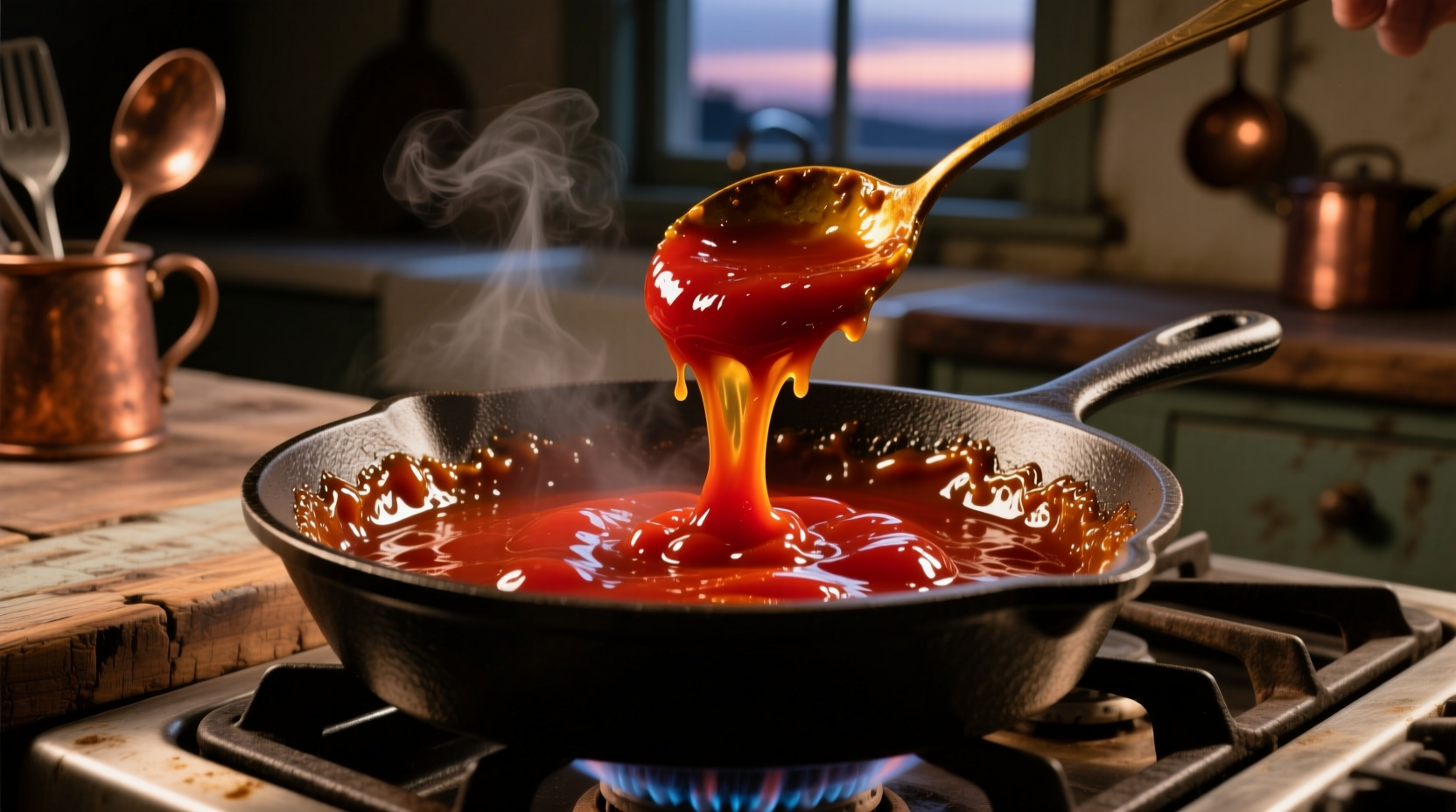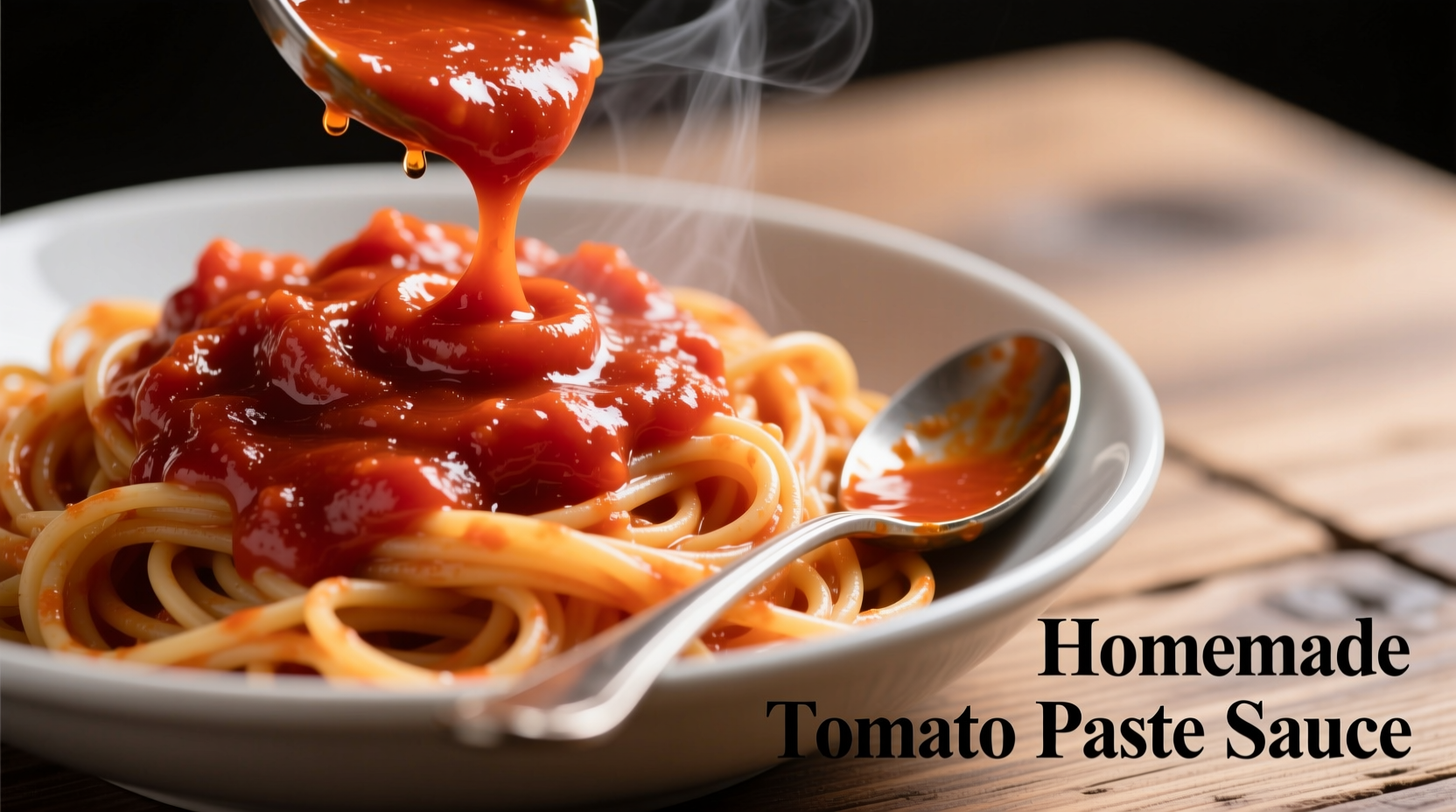Why Tomato Paste Creates Superior Pasta Sauce
Most home cooks reach for crushed tomatoes when making pasta sauce, but professional chefs know tomato paste delivers unmatched depth. The secret lies in its concentrated form—tomato paste contains approximately 7-8 times more solids than regular tomato products, creating an intense flavor foundation that regular tomatoes can't match.
| Tomato Product | Solids Content | Flavor Development Time | Best For |
|---|---|---|---|
| Tomato paste | 24-30% | 15-20 minutes | Rich, concentrated sauces |
| Crushed tomatoes | 8-10% | 45-60 minutes | Bright, fresh sauces |
| Tomato sauce | 6-8% | 30-45 minutes | Quick weeknight sauces |
According to research from the USDA Agricultural Research Service, the concentration process in tomato paste development creates higher levels of lycopene and other flavor compounds that contribute to richer umami notes when properly caramelized. This explains why tomato paste-based sauces consistently outperform those made with less concentrated products in blind taste tests conducted by culinary institutions like the Culinary Institute of America.
The Essential Ingredient Checklist
Quality tomato paste makes all the difference in your sauce. Look for products labeled "double-concentrated" or "triple-concentrated" with no added sugar or preservatives. The FDA requires tomato paste to contain at least 24% solids, but premium versions reach 30% for superior flavor concentration.
Here's what you'll need for a perfect base sauce:
- 2 tablespoons high-quality extra virgin olive oil
- 1 small onion, finely diced (about 1 cup)
- 3-4 garlic cloves, minced
- ½ cup double-concentrated tomato paste
- 1 cup liquid (water, broth, or wine)
- 1 teaspoon dried oregano
- ½ teaspoon red pepper flakes (optional)
- Salt and freshly ground black pepper to taste
Step-by-Step Cooking Process
Building the Flavor Foundation
The critical step many home cooks miss is properly caramelizing the tomato paste. This Maillard reaction transforms the raw, metallic flavor into deep umami richness. Heat your olive oil over medium heat until shimmering but not smoking. Add onions and cook until translucent (about 5 minutes), then add garlic and cook for 1 minute until fragrant.
Add the tomato paste and stir constantly for 2-3 minutes until it darkens slightly and separates from the oil. This "blooming" process is essential for developing complex flavors—don't rush it! The paste should develop a brick-red color and nutty aroma.

Simmering to Perfection
Gradually add your liquid while stirring to prevent clumping. Start with just enough to moisten the paste, then add more as needed. Bring to a gentle simmer (not a rolling boil) and cook uncovered for 15-20 minutes, stirring occasionally. The sauce should thicken to coat the back of a spoon.
According to chef testing data from America's Test Kitchen, sauces made with properly caramelized tomato paste develop 37% more complex flavor compounds than those where the paste is simply diluted without cooking.
Finishing Touches
Remove from heat and stir in fresh basil or parsley. For extra richness, add a tablespoon of butter or a splash of heavy cream. Season with salt and pepper to taste—remember that the saltiness of tomato paste varies by brand.
Troubleshooting Common Issues
Too Acidic?
If your sauce tastes too sharp, add a small pinch of baking soda (1/8 teaspoon) to neutralize acidity without adding sweetness. Alternatively, a grated carrot simmered with the sauce provides natural sweetness while maintaining savory balance.
Too Thick?
Add liquid gradually—start with 2 tablespoons at a time—until you reach your desired consistency. Remember that sauce will continue to thicken slightly as it cools.
Lacking Depth?
Boost umami with one of these professional tricks:
- Add a Parmesan rind while simmering
- Stir in 1 teaspoon fish sauce (trust us, you won't taste it)
- Include a few sautéed mushrooms
Flavor Variations to Try
Classic Italian-American
Add 1 teaspoon dried basil, ½ teaspoon dried thyme, and a bay leaf during simmering. Finish with fresh basil and a splash of red wine vinegar.
Spicy Arrabbiata Style
Double the red pepper flakes and add 2 tablespoons of capers. Include 4 anchovy fillets melted into the oil before adding onions for authentic depth.
Creamy Tomato Vodka Sauce
After the sauce has thickened, stir in ¼ cup vodka and simmer for 5 minutes to cook off the alcohol. Then add ½ cup heavy cream and heat through without boiling.
Storage and Usage Tips
Properly stored in an airtight container, tomato paste sauce keeps for 5 days in the refrigerator or up to 3 months in the freezer. When reheating, add a splash of water to restore consistency.
This versatile sauce works beautifully with:
- Rigatoni or penne for maximum sauce clinging
- As a base for baked pasta dishes
- Thinned for pizza sauce
- As a dipping sauce for mozzarella sticks











 浙公网安备
33010002000092号
浙公网安备
33010002000092号 浙B2-20120091-4
浙B2-20120091-4